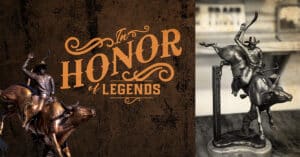The History Of Valentine’s Day
Holiday of Love…
WHO WAS St. Valentine and was he really the patron saint of love? How do Cupid, lovebirds and poetry enter into the theme of Valentine’s Day? What about cards, chocolate and roses?
It turns out a mix of traditions and sources – some historical, some mythical and imaginal – have shaped a “holiday of love” recognized and celebrated around the world.
Historically a Christian feast, St. Valentine’s Day honored one (or more) early martyrs named Valentinus. Lisa Bitel, professor of history and religion at the University of Southern California, says ancient sources cite the existence of several St. Valentines who died on February 14 in the third century in Africa and Italy.
Valentinus number one died with two dozen soldiers in Africa. Beyond his name and death date of February 14, he is lost to history. Valentinus number two, a Roman priest arrested and later executed by Emperor Claudius II, reportedly converted a jailer and his family to Christianity after healing the man’s blind daughter. Valentinus number three, a Catholic bishop of Terni also executed by Claudius II, supposedly debated a potential convert after healing his son.
Bitel suggests that Valentinus number two and three may have actually been the same person, and local legends arose in Rome and Terni where each was said to have performed their death-deserving acts.
Other historians suggest a creative connection between the liturgical commemoration of St. Valentine on February 14 and the ancient pagan fertility festival of Lupercalia that was celebrated in mid-February by the Romans. It included a ritual drawing of the names of women with whom men would then pair up for the duration of the festival.
Pope Gelasius purportedly outlawed the Lupercalia in the fifth century when he decreed February 14 to be St. Valentine’s Day, but the influence of its matchmaking and fertility rituals on later interpretations of Valentine’s Day appear likely if unproven.
Time and retelling transformed the history of St. Valentine into a legendary figure who by the medieval period had become a single historical individual renowned for performing secret marriages, passing notes between jailed lovers and even sending the first Valentine note to the jailer’s blind daughter whom he had healed, signing it “from your Valentine.”
In the middle ages, Valentine Day’s association with romantic love solidified in several ways. February 14 marked the beginning of bird mating season and English poet Geoffrey Chaucer in his poem the “Parlement of Foules” wrote, “For this was sent on Seynt Volantynys day / Whan euery byrd comyth there to chese his mate,” marrying the idea of lovebirds with St. Valentine’s Day.
This new association apparently inspired European nobles to send love notes to one another during bird mating season. Even the Duke of Orléans, imprisoned in the Tower of London, wrote his wife in February 1415 that he was lovesick, calling her his “very gentle Valentine.” Such greetings first appeared around this time.
After Chaucer, Shakespeare romanticized Valentine’s Day in his works, notably in Hamlet where an enamored Ophelia calls herself Hamlet’s Valentine. As the day’s notoriety and popularity grew, ordinary men and women began penning poetry to their beloveds.
By the middle of the 18th century, exchanging notes and tangible tokens of affection became common among people of all social classes and by the early 20th century, Hallmark began mass producing cards, commonly depicting Cupid, the Roman god of love. Red roses became the symbol of beauty and love and chocolatiers like Hershey and Cadbury began marketing sweets for sweethearts.
May we all give and receive love on February 14. •
Valentine’s Day Trivia Questions
1. How much did Americans spend on Valentine’s Day last year?
a) $10.5 million
b) $8.5 billion
c) $20.7 billion
d) $40.2 billion
2. When did the Sweetheart conversation hearts candies make their debut?
a) 1866
b) 1901
c) 1927
d) 1964
3. Approximately what percentage of consumers celebrate
Valentine’s Day?
a) 80%
b) Just over 50%
c) Just under 50%
d) 40%
4. The Bronx Zoo allows people to name a creature after their lover on Valentine’s Day. Which creature?
a) pigeon
b) duck
c) rat
d) cockroach
5. In Roman mythology, who is Cupid’s mother?
a) Aphrodite
b) Venus
c) Juno
d) Luna
6. Which movie was not released on Valentine’s Day?
a) “Silence of the Lambs”
b) “A Good Day to Die Hard”
c) “Love Actually”
d) “Daredevil”
Trivia Question Answers
1. c
2. b
3. b
4. d
5. b
6. c




